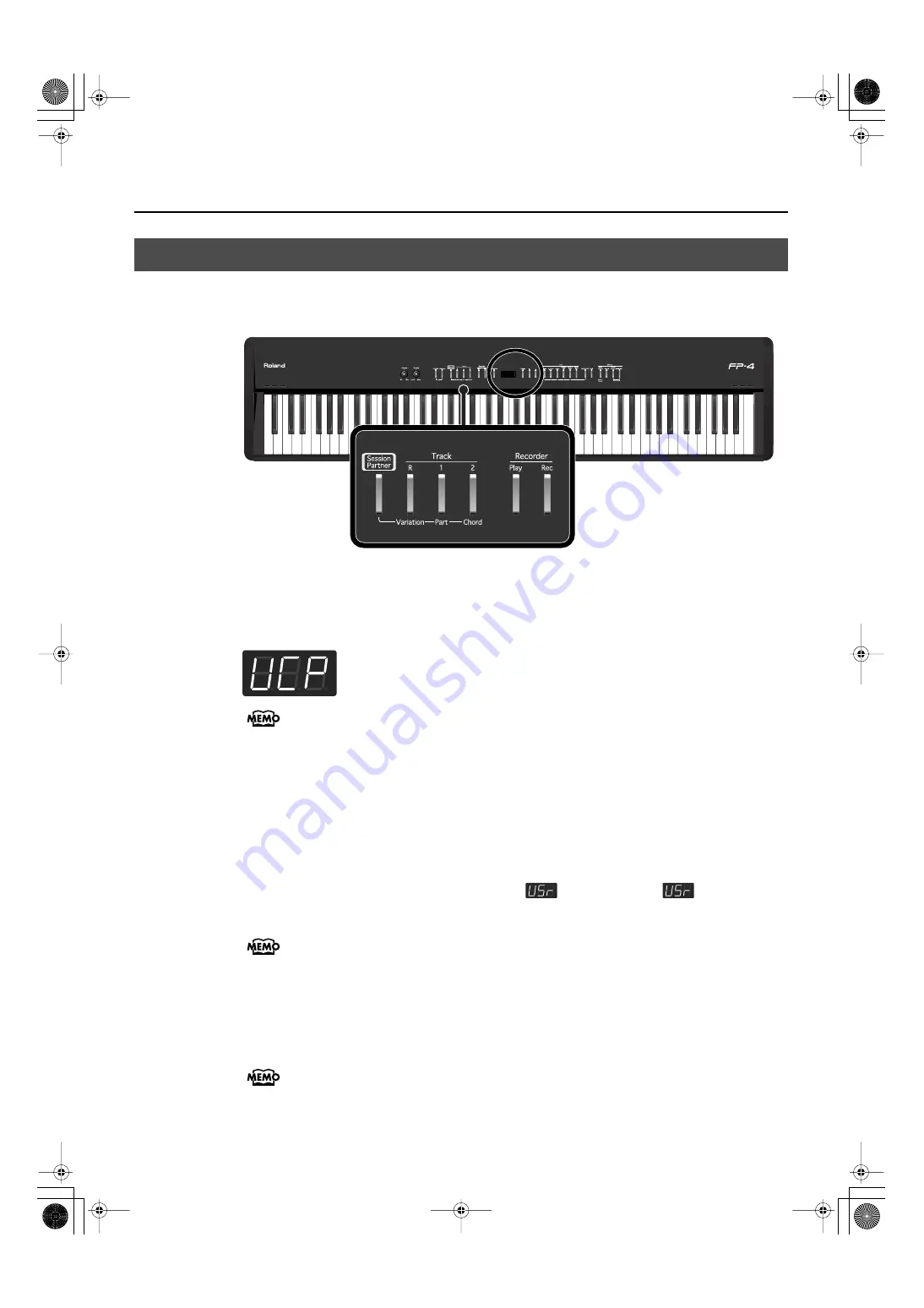
54
Playing Along with Rhythms
You can save a chord progression you’ve specified using the left-hand section of the
keyboard.
ffig.Panel-Session-6.eps
1.
Hold down the [Session Partner] button and press the [Rec] button.
The [Session Partner] and the [Rec] buttons flash, and the FP-4 is put into recording standby.
The “UCP (User Chord Progression)” appears in the display.
fig.d-UserChordProg.eps
Press the [Session Partner] button or the [Rec] button to exit from recording standby.
2.
Use the left side of the keyboard to specify a chord and begin recording
the chord progression.
The display will show the chord you played. The intro will not play at this time.
You can store up to sixteen chords.
3.
Press the [Session Partner] button to stop recording the chord progression.
Recorded chord progression patterns are saved to “
.” You can select “
” patterns by
pressing the [-] button when pattern number 1 is displayed.
You can record a chord progression of up to sixteen measures. However, when the
instrument is shipped from the factory, this is set so that eight measures can be
recorded. Recording will stop automatically when you reach the specified number of
measures. You can store up to sixteen chords.
If you want to change the number of measures for which you can record a chord
progression, refer to “Changing the Number of Measures of the Chord Progression
You Record” (p. 55).
You can make settings so that the chord progression pattern won’t change when you
change the rhythm. Refer to “Fixing a Set Chord Progression” (p. 89).
Recording the Chord Progression
FP-4-e.book 54 ページ 2007年5月24日 木曜日 午後7時10分
Summary of Contents for FP-4
Page 1: ...07 06 4N 04453567 DIC 90 0 4 4 5 3 5 6 7 0 4 ...
Page 2: ...Cover1 4 ...
Page 135: ...135 MEMO FP 4 e book 135 ページ 2007年5月24日 木曜日 午後7時10分 ...
Page 139: ...Cover1 4 ...
Page 140: ...07 06 4N 04453567 DIC 90 0 4 4 5 3 5 6 7 0 4 ...






























